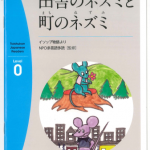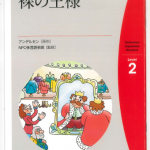田舎のネズミと町のネズミ : イソップ物語より = The town mouse and the country mouse / NPO多言語多読再話・監修 ; 玉木玲子挿絵.(OCLC #951610771)
裸の王様 = The emperor’s new clothes / アンデルセン原作 ; NPO多言語多読簡約・監修 ; 佐々木英子挿絵.(OCLC #951610783)
Recently on twitter, @OpOnions asked:
So who knows why “Aesop’s fables” is a 130 rather than a 100/240 name/title combo?
One proposed reason was that Aesop was the collector / compiler of the collection of stories, so it might be reasonable to list him as creator of the whole collection, as in:
100 0_ ǂa Aesop, ǂe compiler.
245 10 ǂa Aesop's fables / ǂc Aesop ; illustrated by Ernest Griset ;
introduction and notes by Edward W. Clayton.
if not for individual tales, but I more often see this uniform title even for collections:
130 0_ ǂa Aesop's fables. ǂl English.
245 14 ǂa The fables of Aesop, and others / ǂc with design
on wood by Thomas Bewick.
The name authority record for Aesop does include a usage note:
Do not use as main entry for Aesopic fables, which should normally be entered under a uniform title. Do use as added entry for editions in which Aesop is prominently named (e.g. an edition with title: Aesop’s fables)
Following this convention, individual tales get their own uniform titles, as in:
130 0_ ǂa Country mouse and the city mouse. ǂl Japanese.
245 10 ǂa 田舎のネズミと町のネズミ : ǂb イソップ物語より = The
town mouse and the country mouse / ǂc NPO多言語多読再話・監修 ;
玉木玲子挿絵.
In contrast, Hans Christian Andersen did write the individual stories in his collections, so translations of his individual stories have this coding:
100 1_ ǂa Andersen, H. C. ǂq (Hans Christian), ǂd 1805-1875,
ǂe author.
240 10 ǂa Kejserens nye klæder. ǂl Japanese
245 10 ǂa 裸の王様 = ǂb The emperor's new clothes /
ǂc アンデルセン原作 ; NPO多言語多読簡約・監修 ;
佐々木英子挿絵.

